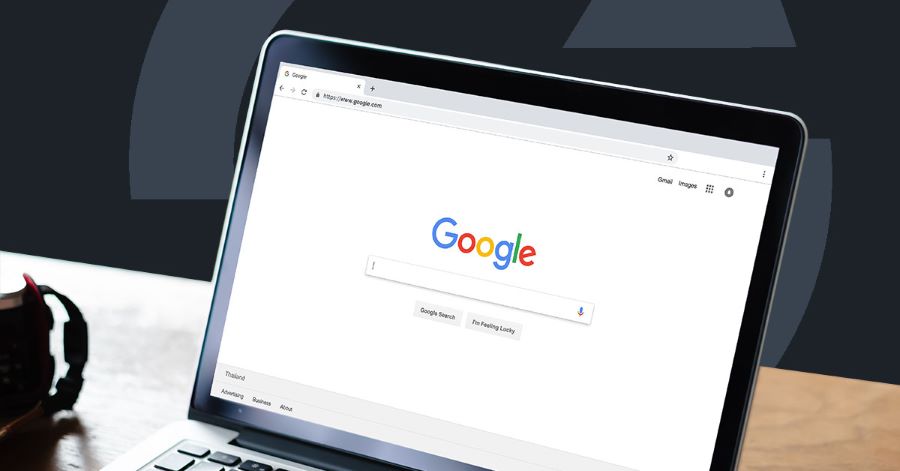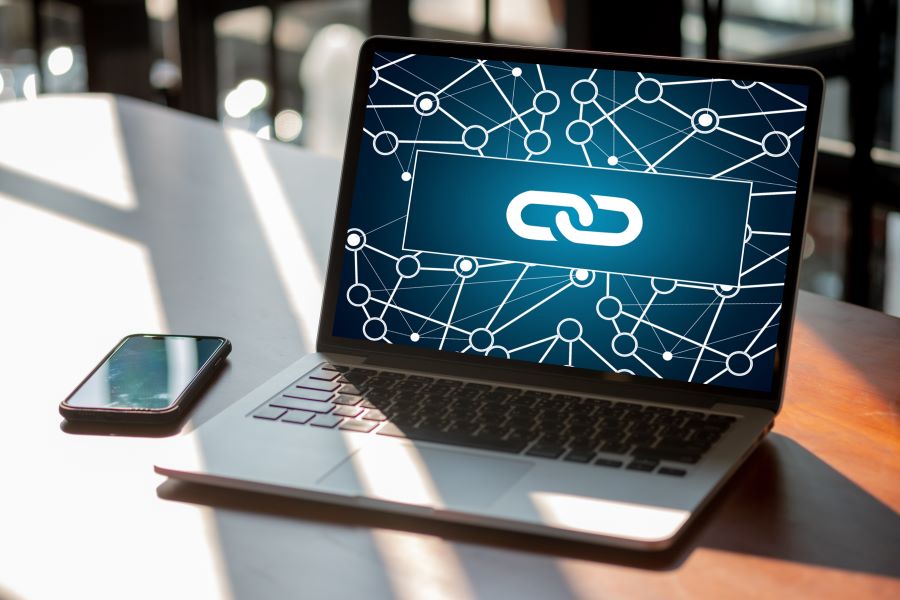Truelogic Episode 59 Recap: A Survivor’s Guide to a Google Core Update

Given that Google has a search history of over 20 years and conducts more than two trillion searches each year, it’s not unexpected that the search engine updates its algorithm regularly. In fact, in the last year alone, Google Search has undergone more than 3,000 changes.
Google’s core updates are distinct from other launches as they bring about significant and extensive changes to the search algorithm and systems. Typically, Google launches go unnoticed, but core updates are closely watched because they can have a noticeable impact on search results.
But what if you’re negatively impacted by a core update? Don’t panic! We’ve got you covered with tips and strategies to help you evaluate the purpose of the update, assess your current content, and determine if there are any site quality issues that need addressing.
Podcast Transcription
Berns San Juan: Hi, and welcome to another episode of the Truelogic DX podcast. Today we’re going to talk about the Survivor’s Guide to a Google Core algorithm update. So Google is over 20 years old, and since that time, I remember doing lectures and telling people that Google conducts about over 150 billion searches each year. And fast forward to over 20 years later, and the volume of Google searches has now hit 2 trillion searches per year, right? So it’s not unexpected that because Google pride itself in giving you the best results that a… it’s the number one search engine still in the world, but also that it updates its algorithm more regularly than everybody else does. Last year, if you do account, Google would’ve roughly done around 1500 to 3000 core updates. So Google Core updates are usually watched out for by most SEO agencies because they’re pretty distinct.
Now, take note, core updates happen almost daily. In fact, in some cases, they can happen multiple times in a day. But the core updates we’re going to talk about are the major ones, the ones that deserve attention like the ones that get published on TechCrunch and Search Engine Journal and SEO Roundtable, and so on. So normally, Google launches core updates. They happen quietly, and they go unnoticed, but major updates are the ones that get people’s attention. And these are the ones that we see happen every three months, every six months. And when a major core update happens, it is expected that it impacts upwards of 3% of all searches, usually beginning in the English language. So in this episode, we’re going to talk about what you need to understand about core updates, at least major core updates, and then what you need to do to not just survive them, but thrive in the world of the continuing evolving Google algorithm.
What is a Google Core Update?
I think to be able to understand this better, you guys sort of need a structural understanding of the Google search engine. So historically, Google had a core algorithm, and for lack of a better term, we’ll call it, the page rank algo, which is the core of the engine. And that major search engine algorithm is what primarily controlled, who ranked and who didn’t rank. Over the years, Google tried to improve on this core algorithm by adding in multiple elements like the panda algorithm, the freshness algorithm, the pigeon, the YMYL, the EAT, and the medic going all the way to the introduction of birth, which is sort of like, the inheritor of latent semantic indexing. It allows Google to better understand the context of the content inside your website. Think of a core update as all of those are put together, right? But at the heart of a core update is the context of a website. The more contextually related your website is to an idea, the better you perform for it.
I’ll give you guys an example. If the motivation I had for going to Google, let’s say you used to rank for, right? Like, let’s say you used to rank for how to cook adobo. If you think about that query, that’s an I want to do moment. Like somebody is looking for a procedure to do something and what might have been a magazine, but instead of showing people how to cook it, the content that you might have had might have just been the recipe, right? And then you talk about your different experiences with Adobo, or let’s say you rate the different Adobo restaurants in the metro along with an Adobe recipe. That’s not quite going to cut it in the world of a contextually understanding algorithm because it understands that the reason the person performed the search was to learn how to perform the method of cooking. And so where you might have appeared on position one for a keyword like that, you might discover yourself on position seven, on position nine. And what that tells you is it’s not that. So Google is not penalizing you. A core algorithm update is not a penalty action, but when you drop as a result of a core algorithm update, it’s not so much Google penalizing you as Google is preferring other people’s content. It understands another website’s content, and another web page’s content to be more contextually relevant to what motivated that query. So I hope I’m sort of getting that across.
Examples of Past Google Algorithm Updates
Take for example the Panda algorithm. This was deployed if I’m not mistaken, if memory serves me right? This was in March 2011. And this was focused on removing content forms from Google’s index. It targeted websites whose contents were created just stuffed with keywords and were just created to rank or for websites with duplicate content, essentially websites that didn’t bother to put in the effort to create value for their users. But the Panda focused on the content of your website. Yes, the Panda had many iterations, but there were 25 big ones across two to three years, right? And each of those 25 major updates affected more than 3% of searches. So a core algo update would be similar to what the Panda used to do.
Now, another example of an algorithm that was super relevant, or that was a relevant signal is freshness. And this is why a lot of SEOs will tell you, “Oh, are you blogging? You should blog, you should blog, you should blog.” You shouldn’t blog because your SEO says so, right? You should blog because you’ve got something to say, you should blog because you’ve got an idea to share. You should blog because you are a genuine expert on a specific subject matter, and that content creates value for your audience. However, SEOs are not technically wrong. One of the things that Google rewards, so one of the ways that we track whether Google trusts your brand or not, is how frequently it revisits your website. So how frequently it revisits your website? Historically, the only way to get visited frequently by Google to get larger SEO power lines and get a larger crawl budget was to have a high page rank score. You know, a score that Google has since hidden has long since hit, like I think Feb 2014.
What SEOs discovered was when you refresh the content of a page, when you update the content of your site, Google seems extraordinarily encouraged to scan the content of your webpage. It’s extraordinarily encouraged to scan the content of your blog. And if your blog has a link going to one of your commercial pages, going to one of your money pages, the way the crawler bot behaves is it scans from top to bottom, and when it sees a link, it follows. And so this is why SEOs use blogging as part of their strategy. It is to encourage Google to frequent your website more often so that you develop more trust with the search engine, right? So freshness, and then you’ve got like the Panda algorithm, right? This one I believe is Feb 2012. And this is the algorithm that was feared by a lot of SEOs, especially guys that did a lot of black hats.
Because if the Panda judged the performance of your website in terms of the quality of your content, the Penguin judged you based on the quality of the links your website acquired. And like the Panda, the Penguin went through major updates periodically. You didn’t have to watch out for every little Penguin adjustment, but you did have to watch out for all of the major updates in the Penguin algorithm. So that one mattered a lot.
Bert is, I think, game-changing, right? This improved search results for longer more complex search queries. BERT is all about a contextual understanding of your website. Bert is sort of an AI, right? The T in BERT is the same as in ChatGPT. So it is a transformer. And what it does is it tries to understand the context of the website along with contextual understanding came updates such as EAT or Expertise, Authority, and Trust, YMYL, the YMYL update, which is the Your Money or Your Life update. And then the MEDIC update, right? This is very similar to sort of YMYL, the medic update was released in 2018. It’s because Google did not want non-expert-created content to influence medical decisions, health-affecting decisions that are taped for the users of the Google search engine.
How is a Google Core update different from other updates?
How does the core update differ from App Panda, a Penguin, a medic, a YMYL, and a Pigeon, right? Like, and then all of these other algorithm updates. It’s simple. The pigeon usually affected local searches. Panda usually affected organic search as it related to your content. The Penguin usually affected organic search as it relates to your backlinks. BERT affected you as it relates to informationally relevant keywords that you might be ranking for. So in short, they were all in these little holes, right? Like they sort of affected these little niches, these little relevant signals that you could send to Google. But a core update is sort of all of this combined, right? So Google usually will announce a major core update. They will say, they estimate that it’ll affect 1.2% of English searches, 3.2% of English searches, and so on. They usually only give the percentage of how many English-related searches will get affected. So they don’t tell you, “Oh, here’s the percent in Portuguese and Greek and Spanish and Hebrew and Japanese.” So they don’t do that. Although you can, it is safe to assume that a core update that affects one language will ultimately roll over to all other languages, as we saw with the Panda, the Penguin, and all of the other algorithms that are older.
So a core update is essentially a quality evaluation of your website and more specifically, a quality evaluation of the content of your website, right? So when I say a quality evaluation of your website, part of it is a technical evaluation of your website. Like, is your website secure? Is it fast? Does it mobile index? And so on. But the most important thing, in the same way, is that content is the most powerful ranking factor, content is the most powerful relevance factor that a core update takes into consideration. So why does Google execute core updates?
Why do Google Core updates happen?
Google’s on a mission. And the mission is to present helpful, reliable results for searchers. The mantra is, no, it’s not don’t be evil, but you search and you find what you’re looking for, right? Like that’s the mantra for search. The Google Corporation’s mantra is Don’t be evil, but the Google search engine’s mantra is You search and you find what you’re looking for. And so to achieve this, Google constantly evaluates the ranking algorithm, and it’s usually based on how users interact with search, how many re-queries are done, how many exits are done, how many bounces happen, research, testing, sometimes crowd testing, where Google sends out tester sheets, crowdsourced to multiple participants.
One even leaked a couple of years ago and Google freely published it for everybody to see what the Google algorithm considered relevant for data analysis. There is one major difference between the Panda algorithm, the Penguin algorithm, the Brandy algorithm, and all of those. Back in those days, engineers created those algorithms and made adjustments to those algorithms. Today in the age of the hummingbird, in the age of RankBrain, in the age of Spambrain, it is Google’s own search AI that makes these adjustments to the different ranking factors. And essentially a core algorithm update happens when a big enough adjustment to one of these major relevance factors tends to affect more than 3% of searches.
How frequently does it happen?
And from what Google has published, you know, if you take a look at all the search engine literature out there in, on the world wide web, you can do it by Googling it, right? If you take a look, you will probably see four to six major updates or news on major updates any given year. But, Gary Ilias said that… on average Google has three core updates in a day, right? And this is way back in 2017. So imagine how many times it makes adjustments this year. I remember an article from Search Engine Land last year where they estimated that Google made core algorithm updates roughly around 12 times a day, right? And so that’s where the 1500 to 30,000 core updates estimate comes from. Now for historical context, back in the day when it wasn’t RankBrain and Spam Brain that we were running the search engine, Google made about 500 adjustments to the algorithm on an annual basis, right? So the number of times Google refines itself because it is the AI that refines what search metrics matter and don’t has increased dramatically.
Impacts of a Core Update
A core update can have a positive impact on you, and a core update can have a negative impact on you. Let’s start with the negative so that we end on a positive note with no other reason. Very arbitrary, and so negative. If your website is not contextually relevant, or let’s say the website quality is not particularly good, you don’t pass the test when it comes to core web vitals, and your website’s not secure. Your mobile compatibility sucks. You are ranking the wrong pages for the wrong keywords. What you can expect is a drop in your rankings. And I’m not talking about, you know, you disappear, right? I’m not one of the SEOs that say, “Ooh, Google penalty.” I’m not a penalty brain, I’m not penalty minded. But if the quality of your content is subpar, if the speed of your website is sub par, if the security of your website is sub par, going to the engagement of your website is sub par, what you can expect is that your rankings will decrease over time. So I would probably compare it to a quality update, is what I would compare it to like when back in the day when the algorithms used to update now and then, we had to figure out which algorithm was primarily affecting the drop in the rankings. What we observe here is when you’re negatively affected by a core update, you see one drop followed by another drop. So you don’t disappear from the search altogether, but you might have been position one and you drop down to four, and then you drop down to seven and you drop down to 12, and then you, you drop down to 19 and then there you’re stuck, right?
Now, the reason I mentioned this is to remember that the negative impact of a core update is not an algorithm actively acting on a penalty against your website. If you move from position one to 19, all that means is that Google found 18 other websites whose quality, engagement, and content were better than yours, right? So that’s all that means. Now, the positive impact on the flip side can be four points of increase in search positions for a specific keyword. Seven points of increase in search positions for a specific keyword. So in the same way that you would see three points down, four points down another three points down, another seven points down the same action happens in the opposite direction this time positively. When you’re positively impacted by that, what Google then says, or what you should assume Google is saying is A, the security of your website is sound. B, your mobile compatibility is sound. C your content is sound. Truelogic has benefited from the last I think, six major core algorithm updates. There was even one where we increased traffic by 25%. Oh, by the way, when you gain a temporary boost of traffic from a core algo update, you will not retain the peak, right? So your traffic might jump from 5,000 to 8,000 and then it’ll eventually drop to like 7,000-6,000. So it’ll regress to a higher than average mean, but it will not return to a slump of if your average was 5,000, it’ll not return you to 5,000. That’s how you know you benefited from a core update.
And you can trace when it happens because you see the date when your keywords jump, you see the date when the total number of search impressions you earned increased, and you can see it spike up, but it does not regress to your original, mean it regresses to a new higher average mean. So negative impacts, you’re knocked down a couple of positions, positive impacts, you’re knocked up a couple of positions, and you gain maybe 12 to 25% increases in traffic, at least from the websites we’ve observed with our website.

What makes you benefit from a core update?
-
Context
Context and content. They’re king, right? So the context and the content of your website are king. Make sure that you are satisfying informational queries on informational pages, commercial queries on commercial pages, transactional queries on transactional pages, and then branded queries. Unbranded, navigational pages, right? So it’s all about context. If a user Googled, gaming laptop deals, right? Which is a very commercial slash transactionally motivated query, they’re not looking for a 2000-word blog that will teach them how to find a deal.
They’re looking for a commercial website where laptops with different deals are already offered, right? So that’s an example. Another thing that I observed a long, long ago, some clients want to rank for singular and plural versions of a keyword. Like, let’s do something as simple as insurance policy, insurance policies. But the difference is, think about the context. If somebody Googles an insurance policy, they’re probably looking for a sample of an insurance policy with a specific brand. But if somebody’s looking for insurance policies, they’re probably looking to compare different insurance policies. So if somebody types in car insurance plans, not a car insurance plan and you don’t offer multiple types of car insurance, you shouldn’t strive to be relevant for the plural version of the website ‘cuz you are not a review website, you don’t compare multiple products, you are only promoting your product, right? So this is what I mean by context. Another thing that, and this is the one that you can act on immediately, by the way. Because I mean changing your website’s content could be done just like that.
-
Improved Security
I have encountered people who say, no, no, no, I don’t have security issues. My website is on HTTPS. Okay, your website is on HTTPS but is your SSL certificate up to date? Especially Jan, Feb, this is where I see it all the time, where I try to click through to a website and then Chrome if you are on Chrome, Chrome will warn you, oh, this website’s SSL certificate is expired, so sure, your HTTPS, but that doesn’t mean your encryption certificate is up to date. So make sure that it’s always up to date or else you’re gonna get that Google warning before you can enter the page.
-
Functionality
If you tell the user they can read more, make sure you satisfy that informational click-through. If your CTA says to inquire now make sure you drive them to contact us. But essentially if there’s a functionality on your website, make sure that the functionality on your website works, right?
-
Reliability
Another one is, I would say aside from that, is just the reliability of your website. Try to avoid downtimes, try to avoid 404 errors. Try to avoid 400 pages.
-
Page Speed
Page speed has a 37% impact on whether you will rank or not, right? So these are the things that you can act on in a matter of two to three weeks to gain a benefit from a core algorithm update.
What makes you vulnerable to a core update?
-
Poor quality content
When I say poor quality content, I’m going to take this from the perspective of EAT- Expertise, Authority, Trust. A great example here is when in the Philippines, when you Google a medical term, you will find a commercial website where the informational content is contributed by doctors. These are a group of female dermatologists, right? And they produce the content and they byline it, they byline the content with their credentials. And that’s a great relevant signal, right? The content was written by somebody who is an expert. They are medical doctors, they are dermatologists, they are authoritative in that field, and they’re trustworthy. It meets the requirements for EAT. Medical articles with no byline, become problematic.
Now, can you rank medical content without being a doctor? Absolutely. But only till the first doctor creates that content, right? Does that make sense? Right? So can you rank? Because in the absence of a good result, Google will offer the least bad. And so the least bad content might be content that cites Web MD, content that cites a white paper, content that cites a peer review, and study content that cites different scientific studies. So that might perform, but only until the first expert produces that content, right? And this is something to keep in mind, like take for example, financial content, right? A lot of financial content today performs even though they’re not written by experts. And so what I’ll say to the experts, and you know, experts, if you’re listening right, a lot of you are my clients. Those pieces of content will only continue to perform until you start producing your content. The moment an expert produces content on any material, the content that is produced by the expert will perform.
-
Low-Quality Links
Another thing that might make you vulnerable might be just bad-quality links that go to your website. Like very obsolete stuff. Like take for example, the links you get are just blog comments or just web tool links. And I’ve mentioned this before, if you encounter an SEO vendor that sells you links in the form of blog comments, social bookmarks, or web tool links, turn 180 degrees and walk away. Other things are bad page speed. Poor core web vital scores, keyword stuffing, which just creates bad quality content, and poor mobile optimization.

What do you do if you are negatively impacted by core updates?
-
Evaluate the actual purpose of the update
Create an inventory of which pages you have are informational, commercial, transactional, and navigational, right? All core updates are contextually impacting.
-
Assess your content
Your content might be great, but it might be all over the place. I’ll give you an example of all over the place. Like if you go to online magazines in the Philippines, some of them have great contextual groupings of their web, of their content, but some of them are all over the place. If you go to the blogs of utilities, if you go to the blogs of, no, I’m sorry, banks. Banks, right? Where the categorization of the informational content they create is not well planned out, that can muddy up the contextual value of the content that you produce.
I would say evaluate the informational architecture of your website, right? So take for example, are all investment content together under one major heading are all personal account content together in one heading, are all investment products altogether? In one heading, are all loan products together in one heading? That will be a great example of the contextual organization of your website.
-
Pay attention to EAT and offer your readers the best content possible
Next, find out where expertise, where you can benefit from expertise, authority, and trust. I get it. Bigwigs at a major institution organization may not have the time to create content, but if they don’t create the content, they should be able to proofread the content and sign off that that content is valid or signed off. And that is sufficient by the way, right? A professionally vetted article is the next best thing to a professionally written article. So try to benefit from EAT.
-
Watch out for your internal Links.
If your page, like say, take Truelogic, when we mention the word SEO, search engine optimization like one variation or another, we make it a point to use our SEO commercial page as the resource, right? So we point those links to our commercial pages. Why? Because our SEO page is our most authoritative page on that topic. If you are not vouching for the expertise of your pages, then how does Google vouch for the relevance of those pages? So you have to vouch for your pages before you can expect Google to rank your pages.
-
Get a content audit (from a professional)
The pro tip, is don’t get the producer of the content to audit the content, right? Do not get your content team to audit the content they created. That’s such a bad idea, okay? And then, you know, in the meantime, keep your eye open for other future core updates because they are bound to happen.
So, with that, I’ll wrap up this episode of A Survivor’s Guide to a Core Algorithm Update. Thank you very much for listening to another of our episodes. If you have any questions, comments, suggestions, topics you’d like to discuss, or guests you’d like us to talk to, feel free to give us a shout-out on social media. Subscribe to our Spotify, Google, and Apple accounts. We are on Facebook, LinkedIn, and YouTube. And check out our website for more digital marketing resources. I’ll see you guys in the next episode. Cheers.










